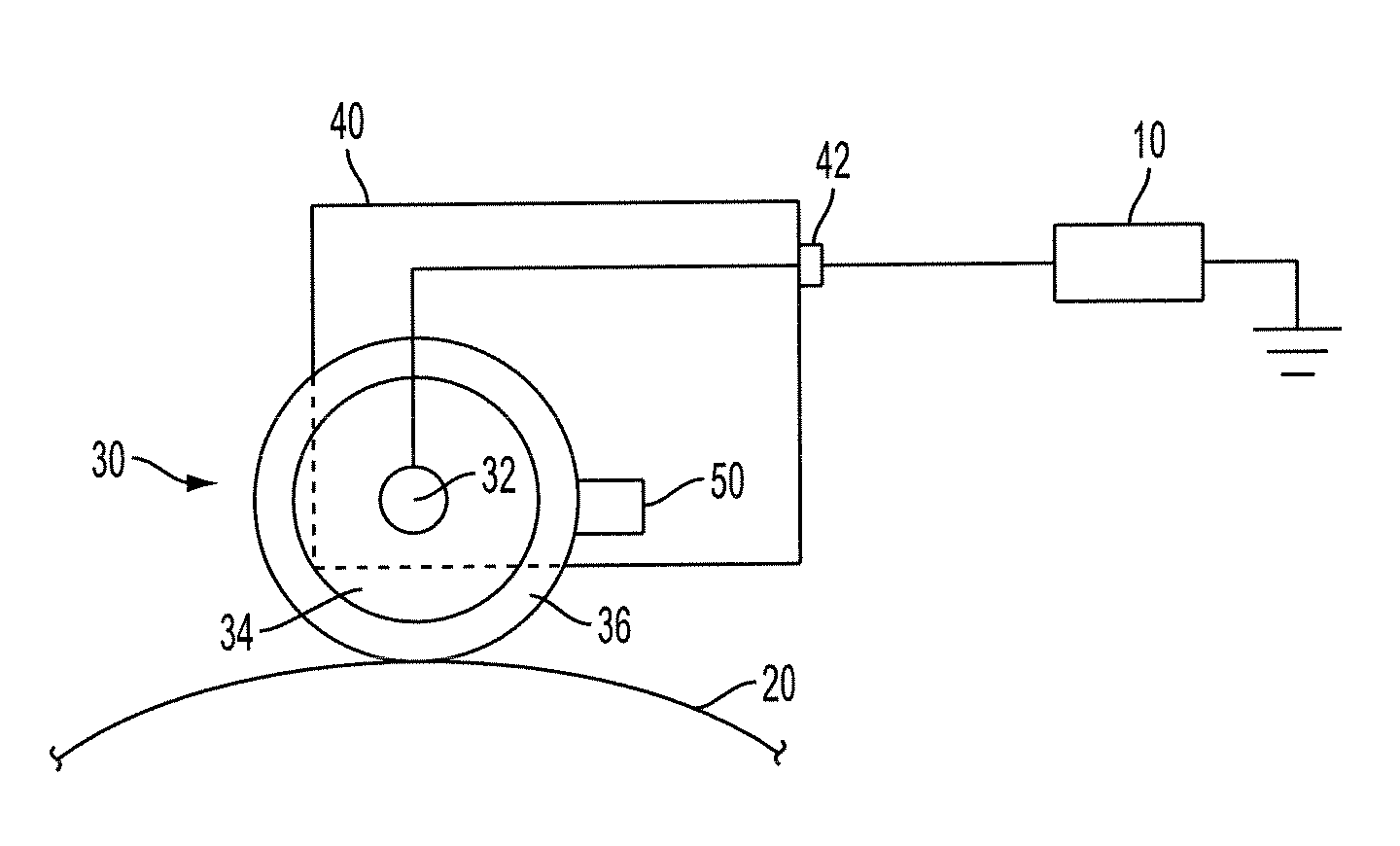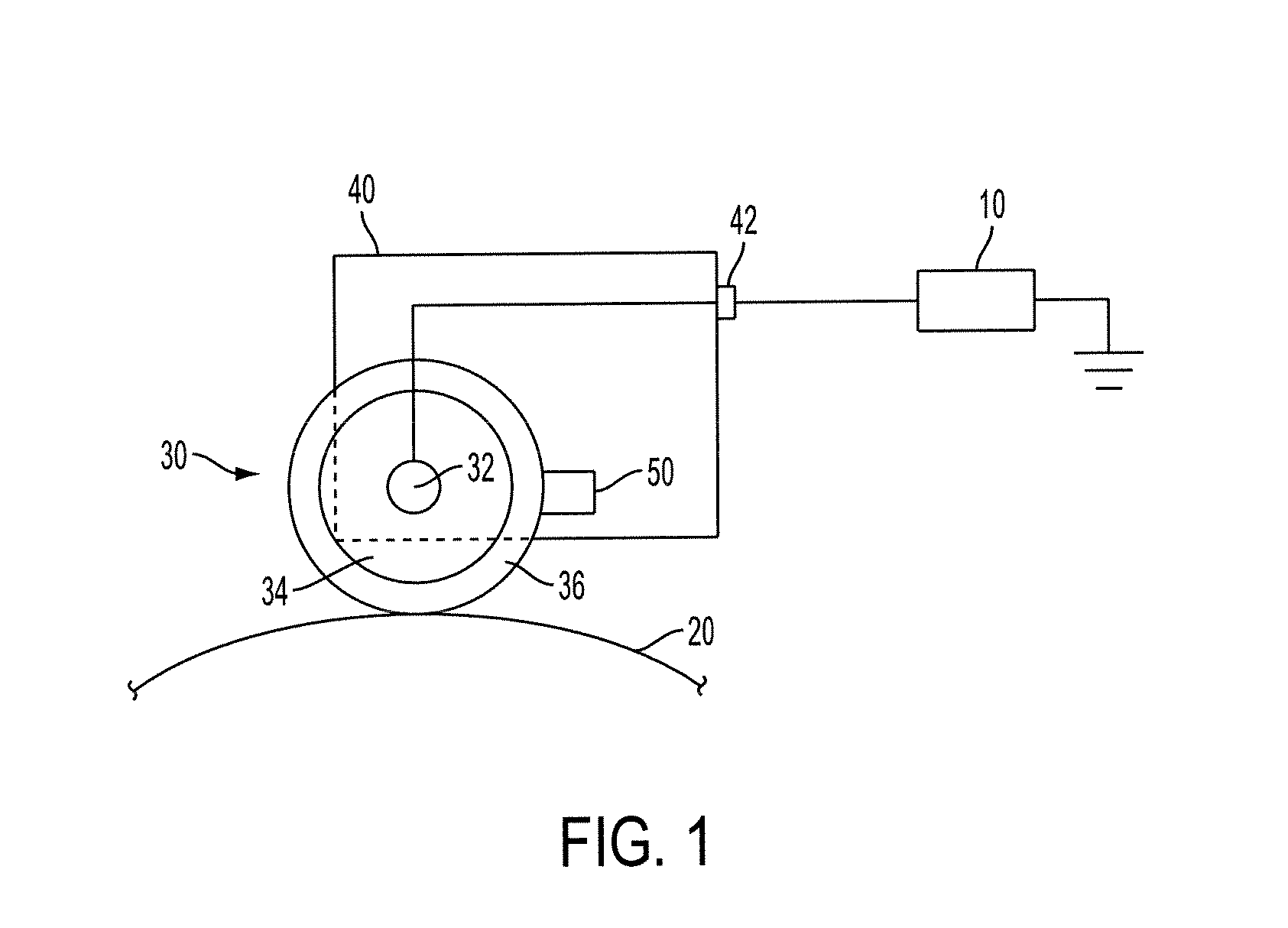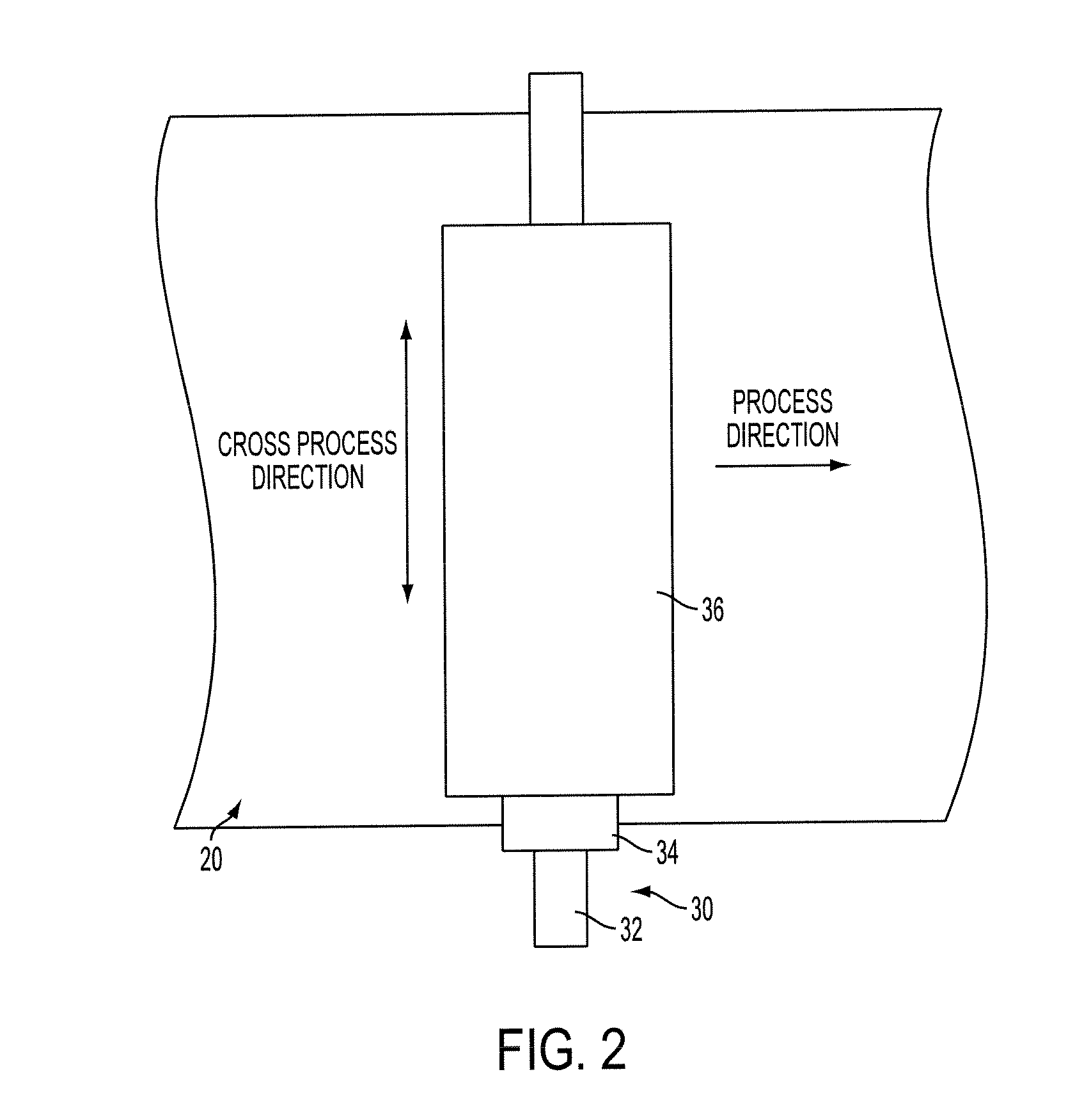Bias charge roller comprising overcoat layer
a charge roller and overcoat technology, applied in the direction of corona discharge, non-metal conductors, instruments, etc., can solve the problems of inordinate maintenance of corotron wires, low charging efficiency, need for erase lamps and lamp shields, etc., to reduce streaking and increase service life
- Summary
- Abstract
- Description
- Claims
- Application Information
AI Technical Summary
Benefits of technology
Problems solved by technology
Method used
Image
Examples
example 1
[0052]An overcoat dispersion was prepared by ball milling a sample of Plyophen J-325 phenolic resin (available from Dainippon Ink and Chemicals, Inc.) with VULCAN® XC72 carbon black (available from Cabot Corporation) in a 50:50 mixture of xylene and butanol. The sample was ball milled for 3 days, after which the dispersion was filtered. A 5 μm overcoat layer was coated on a bias charge roller identical to the one used in Comparative Example 1 using a Tsukiage coater. The bias charge roller was then dried in a convection oven for 15 minutes at 140° C. to remove the solvent and cure the overcoat. The resulting overcoat layer was 5 wt % carbon black and 95 wt % phenolic resin. The surface resistivity of the material was measured to be 108 Ω / sq.
[0053]The bias charge roller was tested for charge uniformity prior to wear testing (t=0). The bias charge roller was then cycled 50,000 times in a Hodaka wear rate fixture, and subjected to charge uniformity testing using the same procedure (t=5...
PUM
| Property | Measurement | Unit |
|---|---|---|
| wt % | aaaaa | aaaaa |
| thickness | aaaaa | aaaaa |
| wt % | aaaaa | aaaaa |
Abstract
Description
Claims
Application Information
 Login to View More
Login to View More - R&D
- Intellectual Property
- Life Sciences
- Materials
- Tech Scout
- Unparalleled Data Quality
- Higher Quality Content
- 60% Fewer Hallucinations
Browse by: Latest US Patents, China's latest patents, Technical Efficacy Thesaurus, Application Domain, Technology Topic, Popular Technical Reports.
© 2025 PatSnap. All rights reserved.Legal|Privacy policy|Modern Slavery Act Transparency Statement|Sitemap|About US| Contact US: help@patsnap.com



